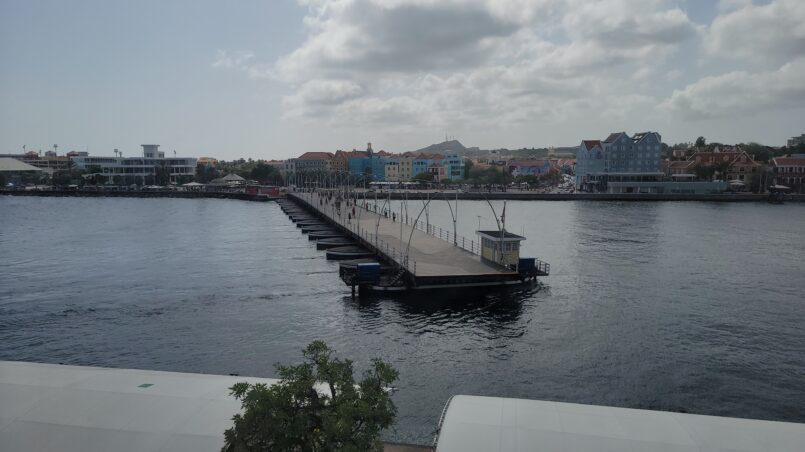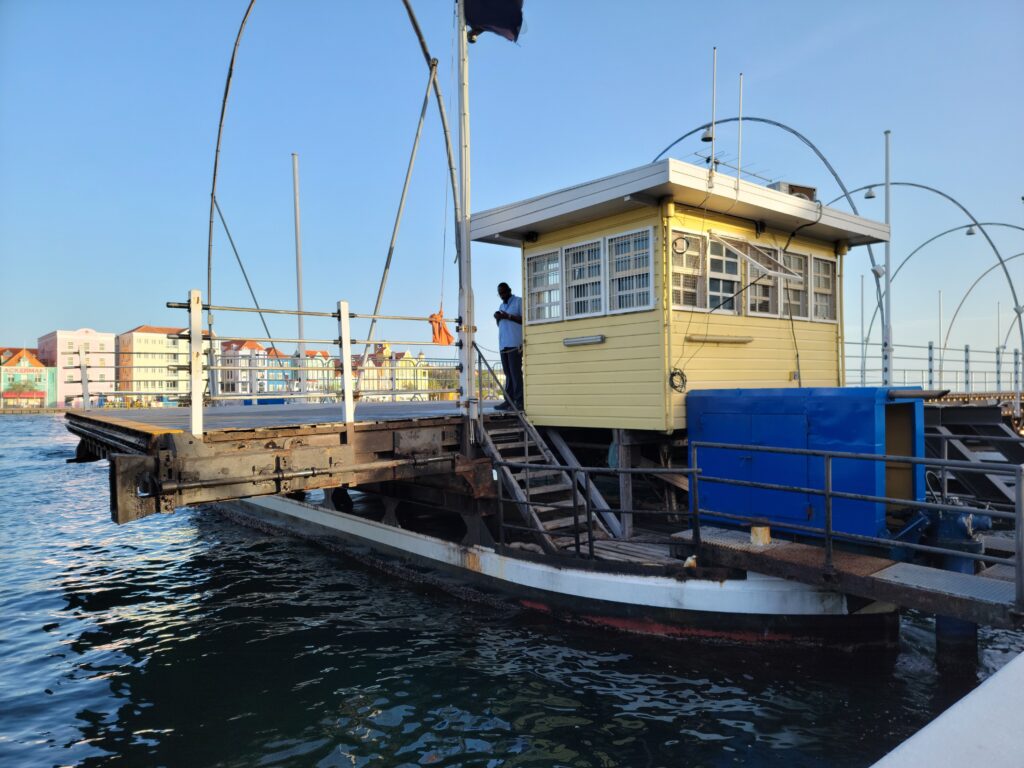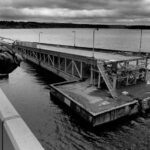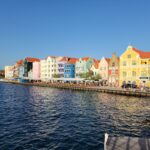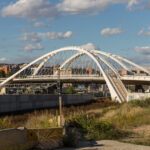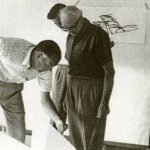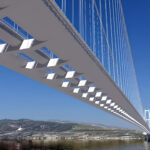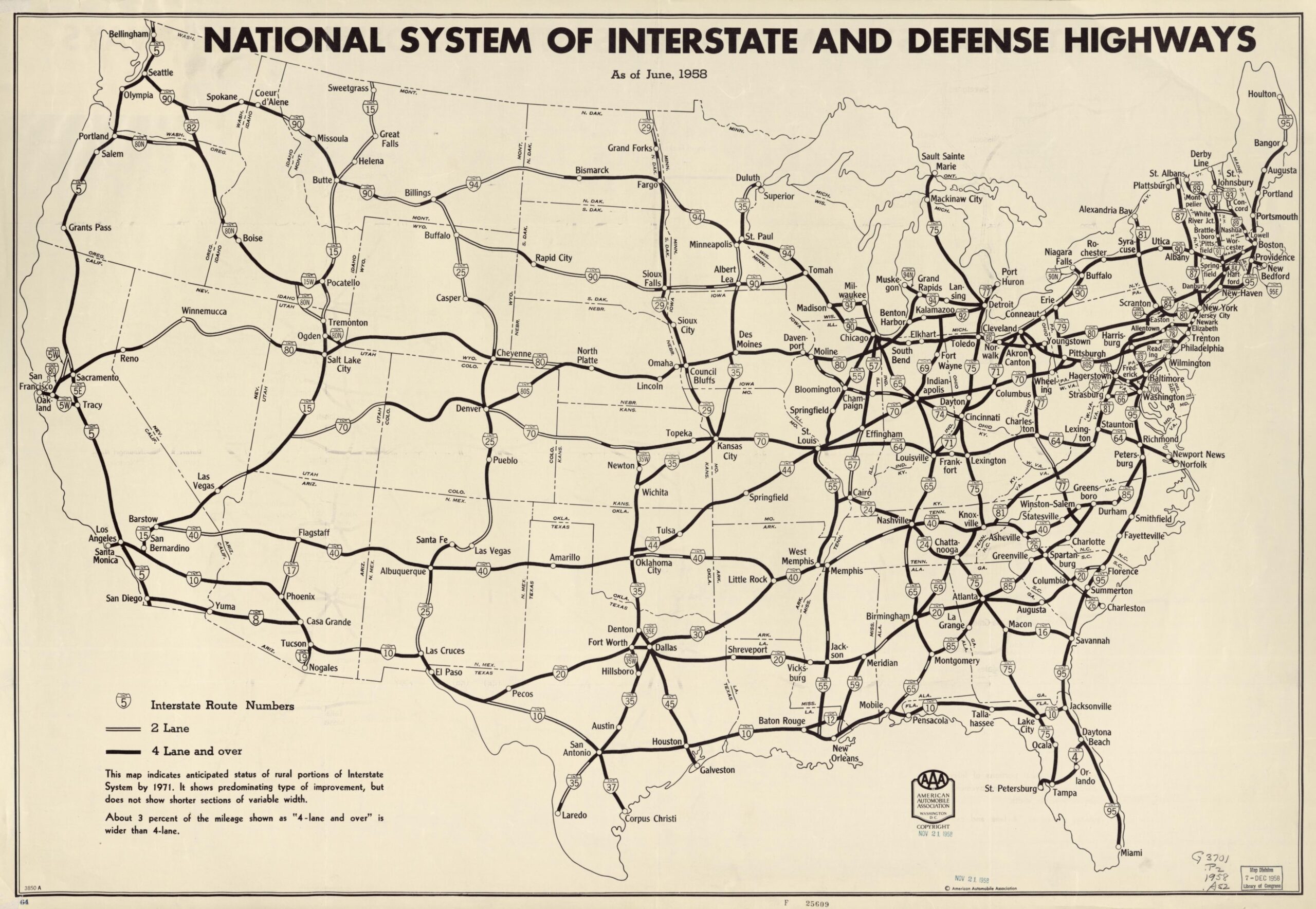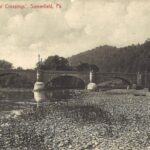When I think of places across the globe where I might encounter a cool bridge or two, the last place I would think to look would be in the Caribbean. But imagine my surprise to learn that the oldest extant floating bridge in the world is indeed located in the Caribbean. Imagine my further surprise to learn that there are not one, not two but three floating bridges in the southern Caribbean, including two of the ten longest in the world!
That’s right, I’m off again in search of more cool bridges to write about. And in this edition of TheBridgeGuy, I will be highlighting the Queen Emma Bridge, located on the island nation of Curaçao.
Curaçao is a constituent country of the Kingdom of the Netherlands, and it has been an almost entirely Dutch possession since it was invaded and taken from the Spanish in 1634. The Dutch West India Company established a trading port on the island, which quickly grew to be dominant in the Caribbean.
In 1954, Curaçao and other Dutch Caribbean colonies were combined to form the Netherlands Antilles. The other colonies included Aruba, Bonaire, Saba, Sint Eustatius and Sint Maarten. As the years went on, the Dutch government introduced reforms that devolved certain political and economic issues to local control. On October 10, 2010, the Netherlands Antilles was dissolved and Curaçao became its own country within the kingdom, with the Kingdom retaining responsibility for defense, foreign policy and financial concerns.
The island’s long association with the Dutch is readily apparent when visiting. Dutch is one of the official languages and is widely spoken and understood. Most streets have Dutch names and there are many Dutch neighborhoods on the island. Even Willemstad looks decidedly Dutch, with its colorful and distinctive row houses reminiscent of Amsterdam. Even the bridges have a distinctive Dutch style to them.
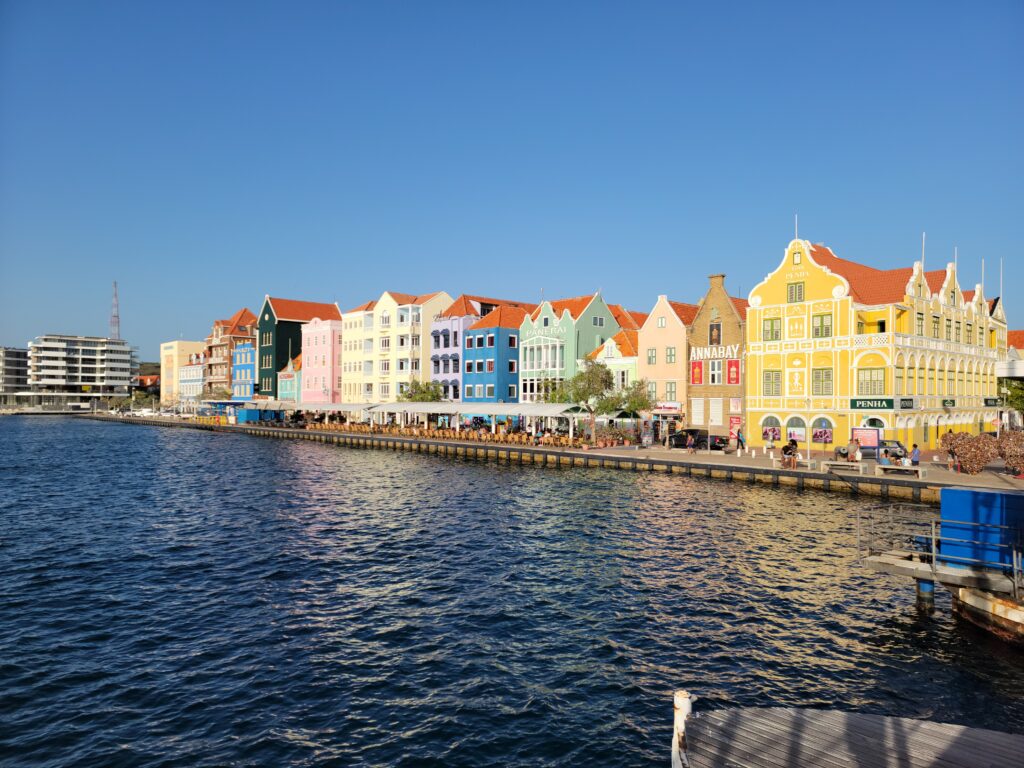
When the Dutch West India Company established what is today Willemstad in 1634, the city was known as Punda. Located on the natural harbor known as the Schottegat, it grew to be a major trading port in the Caribbean. As the population grew, other small towns were established outside of the walls of Punda. These included Pietermaai in 1675 and Otrobanda in 1707.
Otrobanda literally means ‘the opposite side’ in the local Papiamentu language, signifying it was built on the opposite side of Sint Anna Bay from Punda. At some point during the 19th century, these individual parts were collectively given the name Willemstad (William Town in Dutch) but the individual quarters retain their original names.
Sint Anna Bay is still a heavily used waterway to this day. Everything from pleasure craft to large container ships and oil tankers transit the 500 foot wide passage every day. While the bay is vital to the economy of Curaçao, it also acts as a natural barrier between the Punda district to the east and the Otrobanda district to the west.
In those early days, residents used yolas to cross between Punda and Otrobanda. A yola was a small ferry, much like the gondolas used in Venice. As many as 4,000 people a day would cross the bay by yola in 1868, the year Abraham Matthieu de Rouville, then governor of Curaçao, first introduced the idea of a bridge across Sint Anna Bay.
But the idea of a fixed bridge was not well received. Curaçao’s economy relied heavily, and still does today, on shipping in and out of the Schottegat. For any bridge to be viable, it needed to allow for shipping to pass. It would take another 20 years and an ingenious solution by the United States consul to solve the bridge conundrum.
In 1886, Leonard Burlington Smith came up with a detailed plan for a bridge that would connect Punda and Otrobanda for the first time and allow vessels to pass. Smith was an experienced sailor, trader and businessman who first came to Curaçao in 1876 at the age of 38. By 1877, Smith, his wife and 4 children had relocated to Curaçao. His idea was for a floating bridge that could be moved as needed for vessels to pass. The bridge would be supported by wooden pontoons, much like the ships of the day, and would be hinged at one end to allow the bridge to ‘swing’ out of the way of approaching vessels.

Smith’s plans were given final approval in 1887 and construction commenced soon after. On April 30, 1888, Smith wrote to Governor Nicolaas van den Brandof informing him that the bridge was complete and ready for its final inspection. He also asked the governor to give his new bridge a name.
The bridge was named for Emma of Waldeck and Pyrmont, the popular Queen consort to William III. In Dutch, the bridge is known as Koningin Emmabrug or the Queen Emma Bridge in English. It opened on May 8, 1888 to much fanfare, marking the first time that a physical connection existed between the two halves of the city. When originally built, the bridge connected the main thoroughfares of Punda and Otrobanda. The bridge was then moved 18 meters north from its original position.
But Smith wasn’t just the builder of the bridge. His company maintained and operated the bridge until 1900 (Smith died in 1898). Ownership was then transferred to the Curaçao Ports Authority, who continues to operate and maintain the bridge to this day. From 1901 to 1934, the bridge was operated as a toll bridge, however people without shoes were allowed to cross without paying a toll. In 1982, a plaque was erected commemorating Smith’s efforts in building the first Queen Emma Bridge.
Because the bridge was primarily made of wood, substantial rebuilds have been needed over the years. It was rebuilt in 1939, 1961, 1986 and most recently in 2006. The bridge originally carried both vehicle and pedestrian traffic. With the opening on the Queen Juliana Bridge in 1974, the bridge was made a pedestrian only facility.

The 15 pontoons used in the 2006 rebuild are made of steel rather than wood, but the superstructure is almost entire wood. Although hard to gauge from the deck, the pontoons are about 8-10 feet in depth, with about 4-5 feet of draft. Beam of each pontoon is about 25 feet by 60 feet long and they are spaced about 40 feet apart. The bridge deck is 32 feet wide.
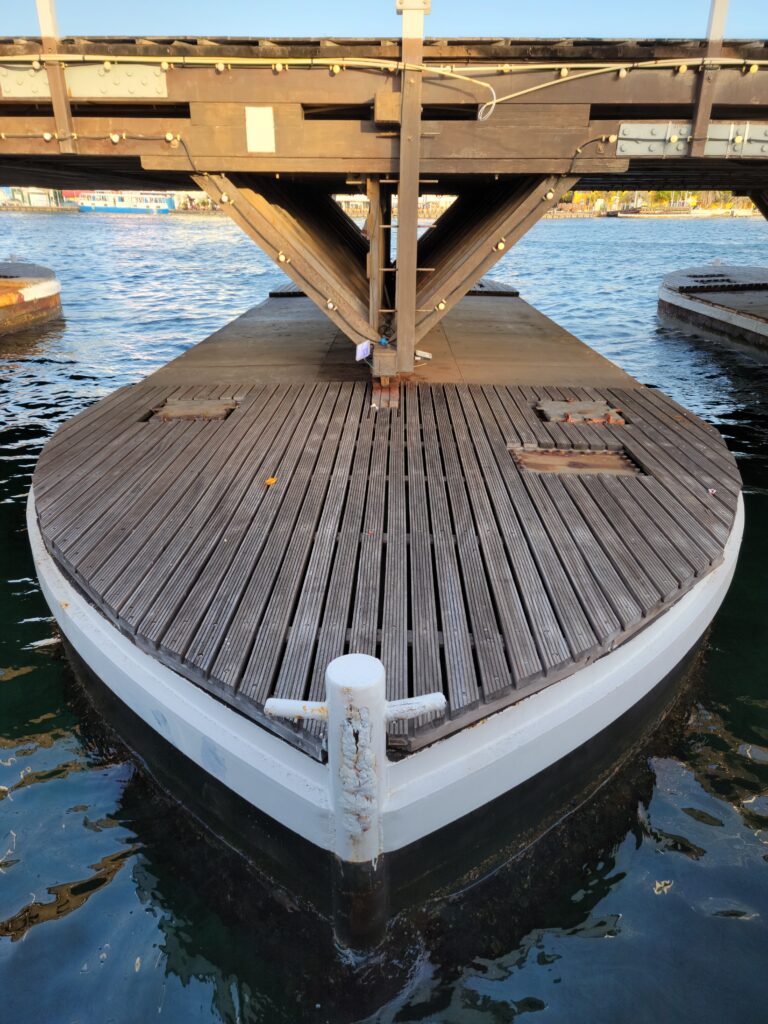
Where the pontoons extend beyond the superstructure, wooden planking is attached to aid in maintenance. There are two access hatches at either end of the pontoon, along with a bolted down service hatch presumable for pump or other equipment delivery.
The bridge is tended around the clock, although it is unclear if there is any kind of schedule for openings for non-commercial craft. There are two types of openings which are denoted by the color of flag or light displayed at the operator’s house. An orange flag or light signifies that the bridge will open only half way (approximately 45 degrees from closed) for 10 minutes or less. A blue flag or light signifies that the bridge will open fully (resting on the Otrobanda side) for longer than 45 minutes.
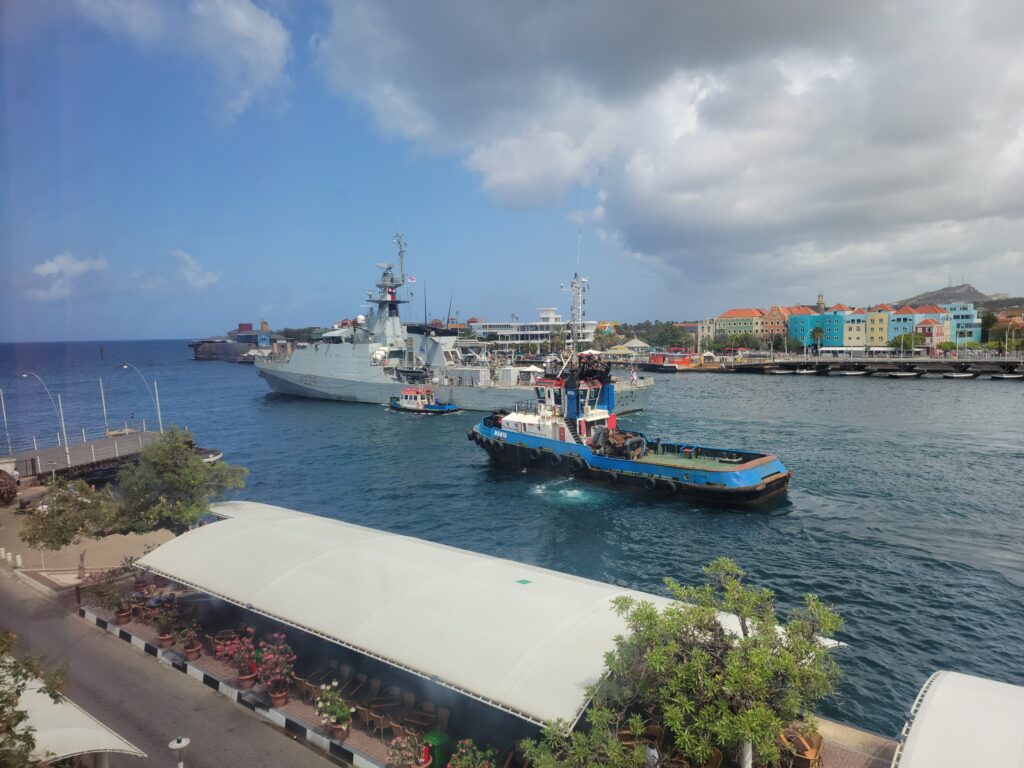
During an orange opening, bells sound and the sliding gates at either end close. However, pedestrians need not clear the bridge for an orange opening and can ride along. These types of openings are used for pilots, pleasure craft or other smaller boats that need access in or out of the bay.
During a blue opening, bells sound and the tender waits for the bridge to clear the bridge. Bells sound and the gates close. During these openings, a free ferry service activates to move people across the bay. These openings are used for military ships, tankers and container ships.
When the bridge opens, two diesel ‘inboard’ engines are started which run ‘outboard’ drives. There is one engine on each side of the bridge, with a fixed orientation propeller perpendicular to the axis of the bridge. A locking pin at the Punda end locks the bridge in place when closed. This pin can be retracted by the operator to allow the bridge to swing. A dolphin pier on the south side prevents the bridge from overextending and opening toward the ocean.
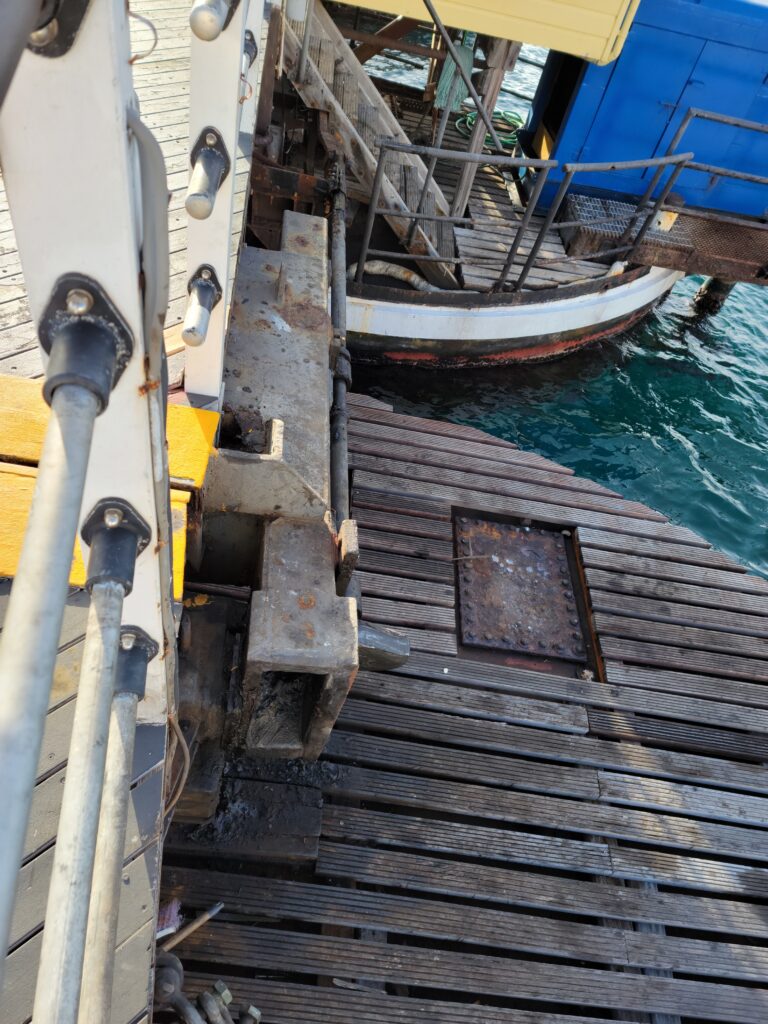
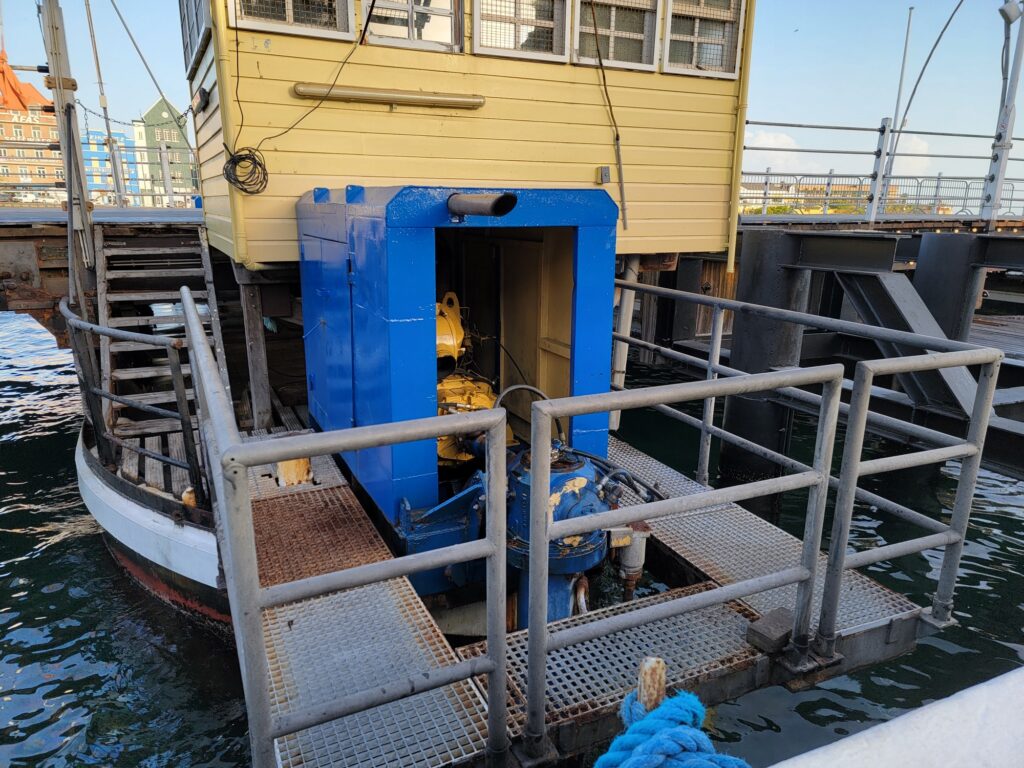
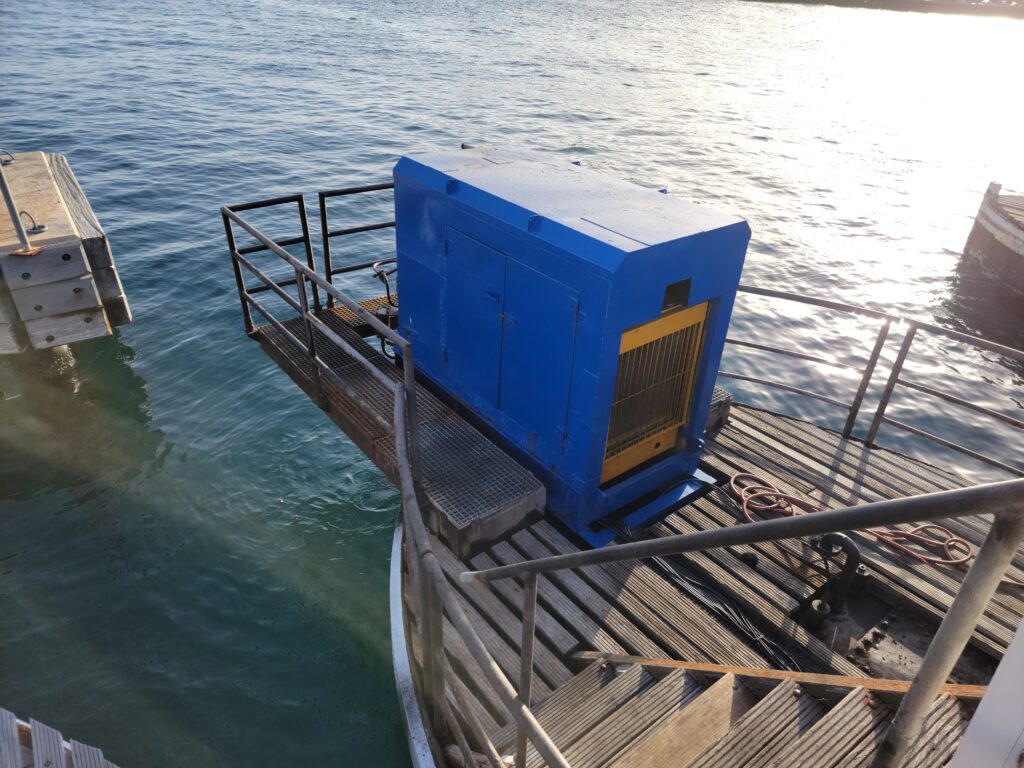
At the Otrobanda end is the hinge mechanism. On the south side, the end transom is supported by a four wheeled dolly. On the north side, the transom is connected to the hinge. This is the pivot point for the bridge’s swing. As the bridge moves, the bridge pivots about the north hinge and the dolly makes a slow arc toward centerline. A steel bumper is built into the seawall on the Otrobanda side and this is what the bridge rests against during a full opening.
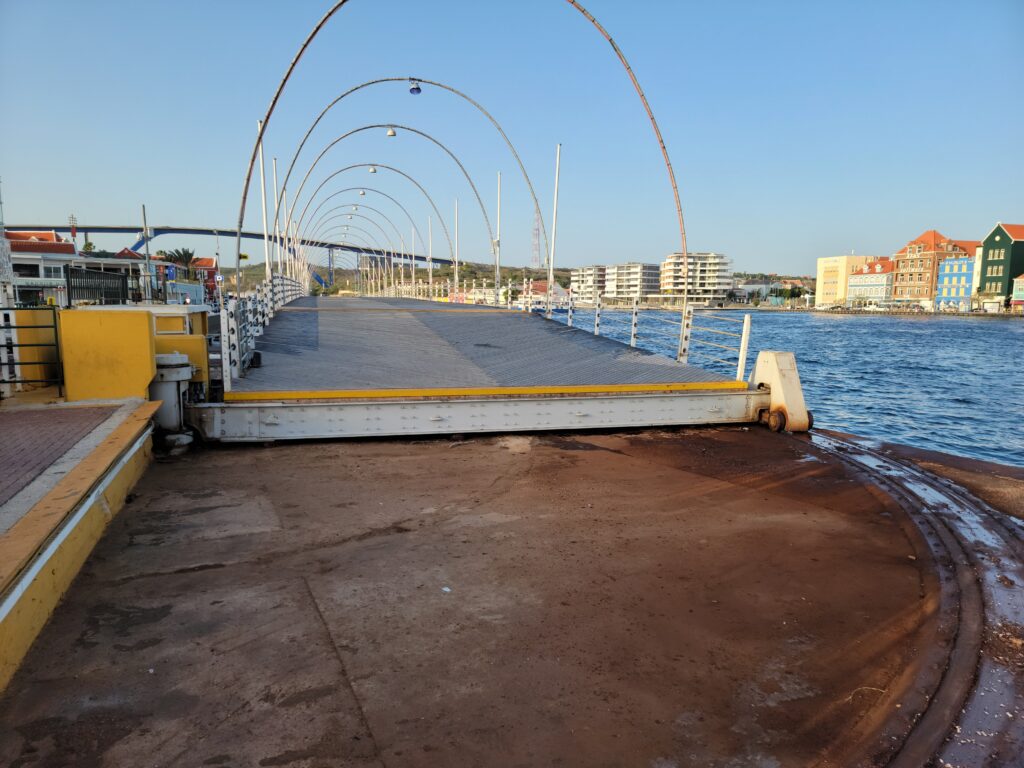
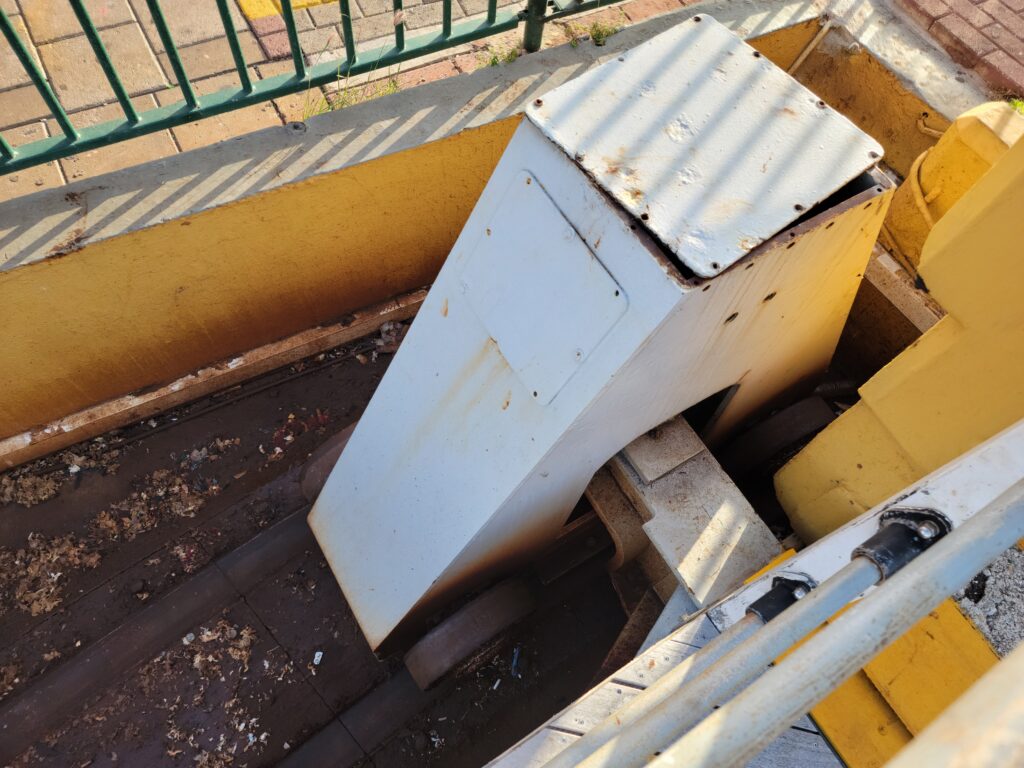
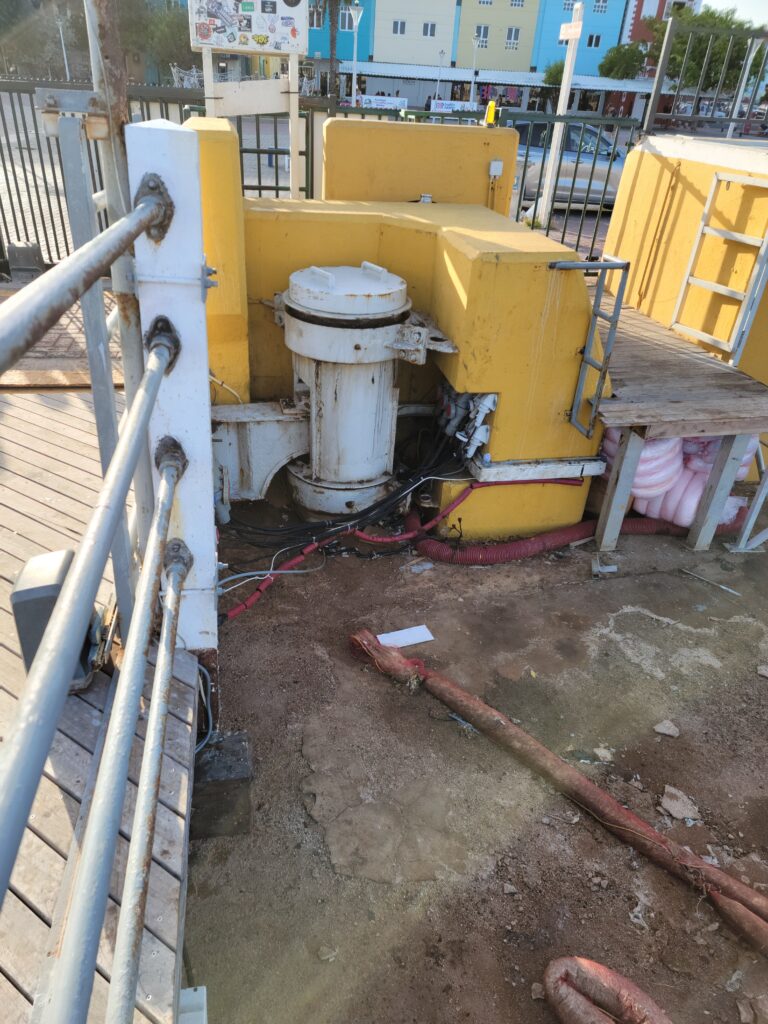
At the Punda end, a non-moving pontoon supports to the end of the fixed transition span and the end lock. The shore side of the transition span sits on a large steel beam that is hinged on either side of the bridge, very similar to an engine mount in a car.
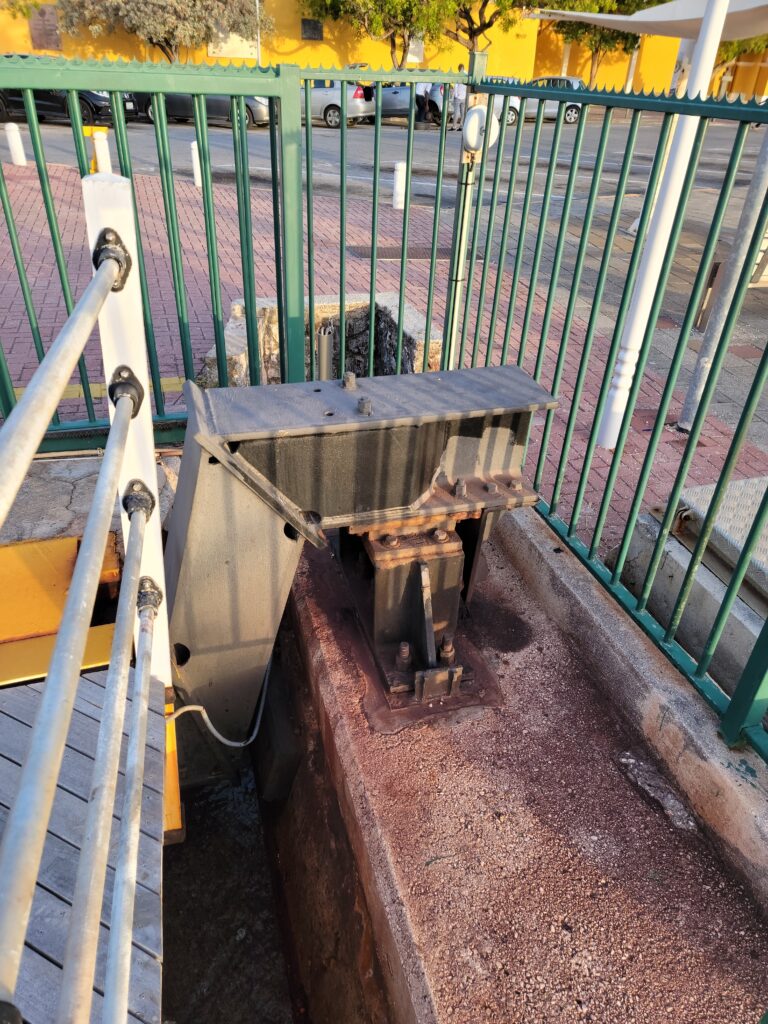
Lighted arches are a nice touch. These were added to the bridge in 1955 for the visit of Queen Juliana and Prince Bernhard. The superstructure is lit by rows of white lights at night and colorful navigation lights at each pontoon.
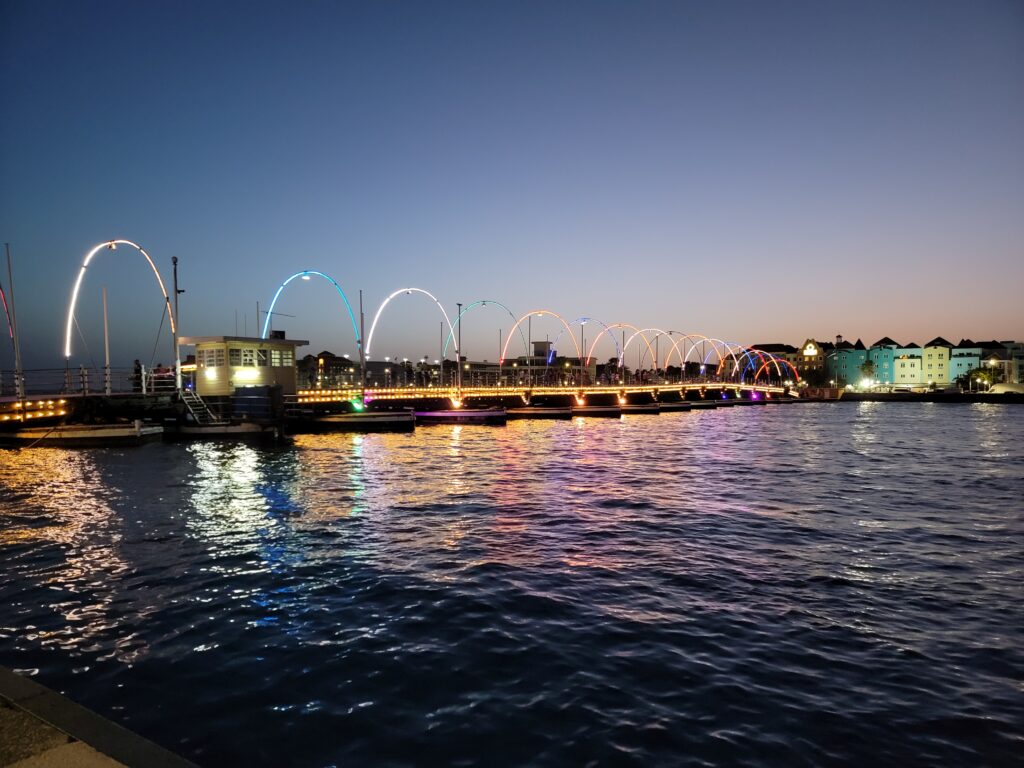
The bridge is obviously near and dear to hearts of the residents of Willemstad, who call the bridge the ‘Swinging Old Lady.’ Residents regularly use the bridge to get to and from work. Tourists linger on the bridge taking photos. Motorbikes and bicycles are permitted to cross the bridge, but only after the rider has dismounted. The bridge is the site of marching band parades and other events.
If Curaçao is on your destination list, be sure to make a stop in Willemstad and check out this unique bridge. Night time is best when everything is illuminated and Punda comes to life with food and music. Stay tuned for more on the bridges of Curaçao!
Views: 808